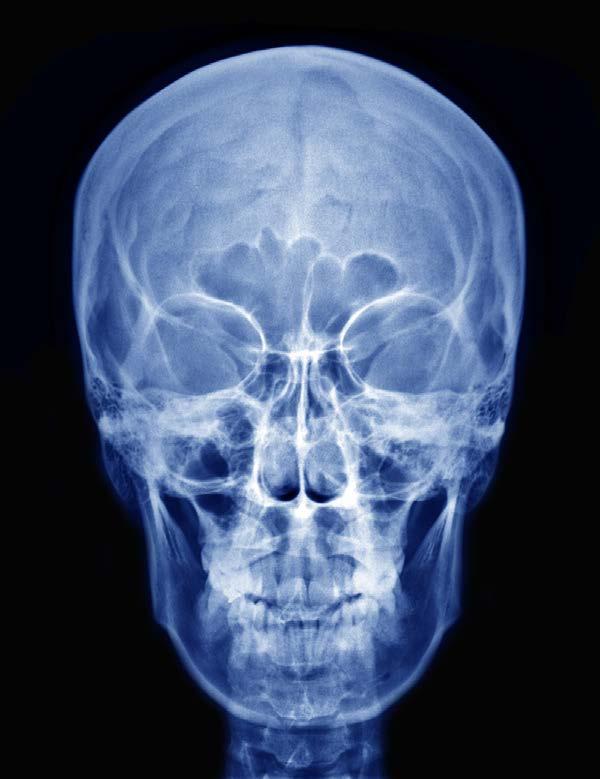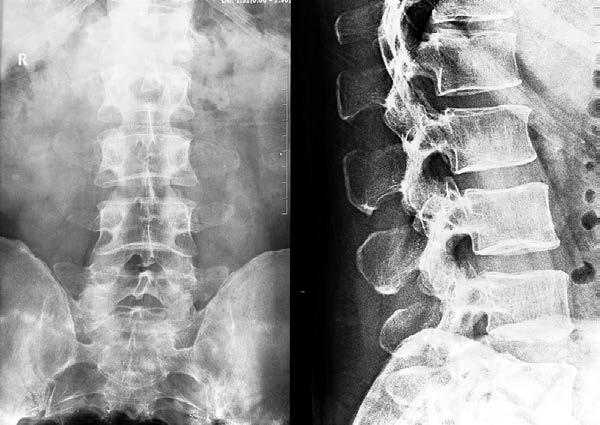Figure 3.
The Waters view is an angled PA view of the skull that looks specifically for sinusitis or for facial fractures. The frontal and maxillary sinuses are what can most easily be seen with fractures visible on the inferior orbital rim, maxillae, zygoma, and zygomatic arch. The patient stands upright and faces the x-ray source. A skull film using the Schuller method will detect problems with the base of the cranium. It cannot be used in suspected cervical spine fractures or when subluxation of the cervical spine is suspected. It can be used to detect multiple areas of the face, such as the hard palate, mandible, and both the sphenoid and ethmoid sinuses. The occipital bone can also be visualized. The patient is upright or supine for this x-ray. The neck must be hyperextended in order to see the structures of the base of the skull.
CERVICAL SPINE FILMS Spine films can be done on the cervical, thoracic, or lumbar spine. In a good cervical spine film, the x-ray must visualize all seven vertebrae plus the C7 to T1 junction. The cervical spine film can be done on the erect patient in either the AP or PA view. Figure 4 shows a cervical spine film (both AP and lateral):
11







